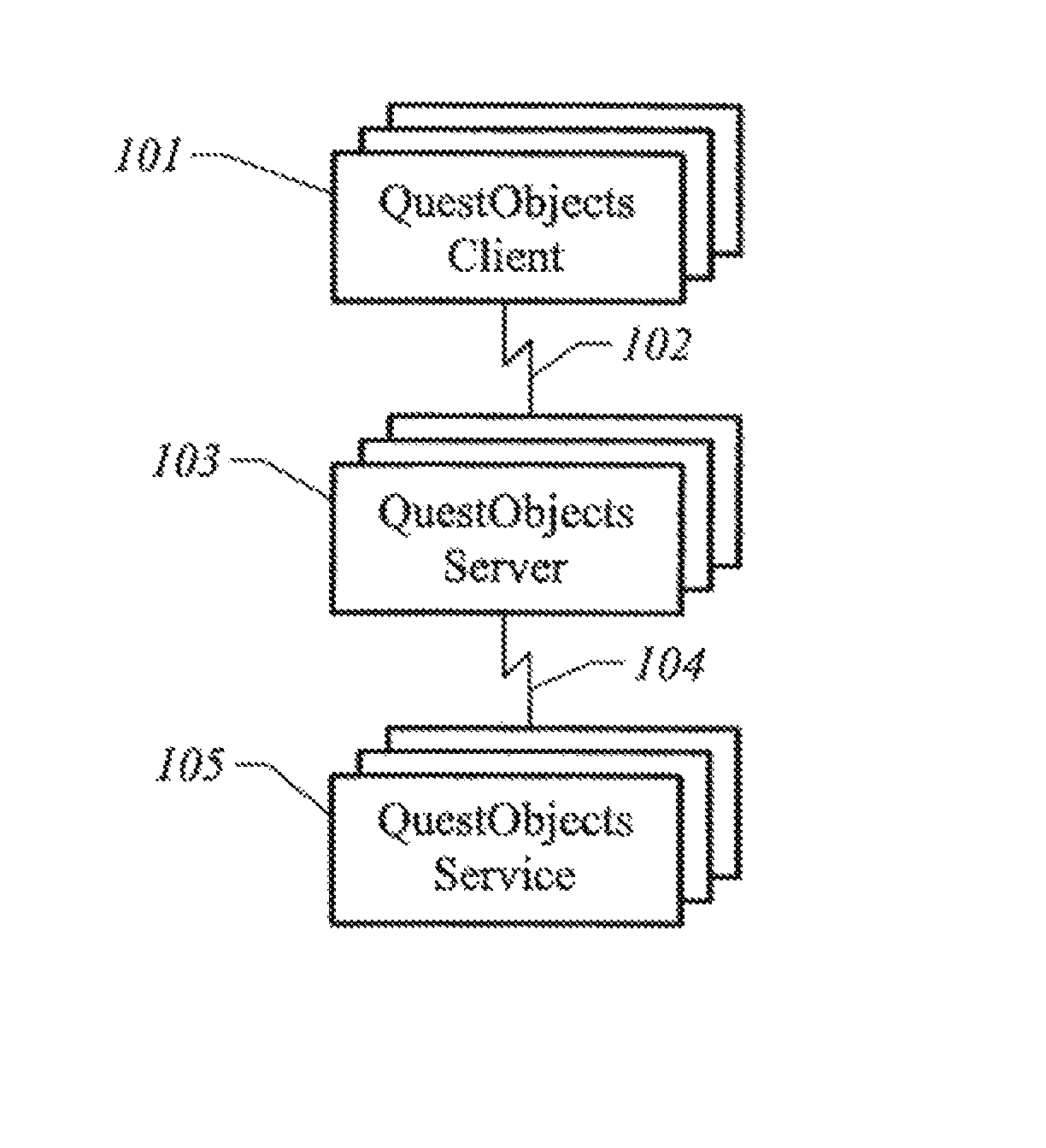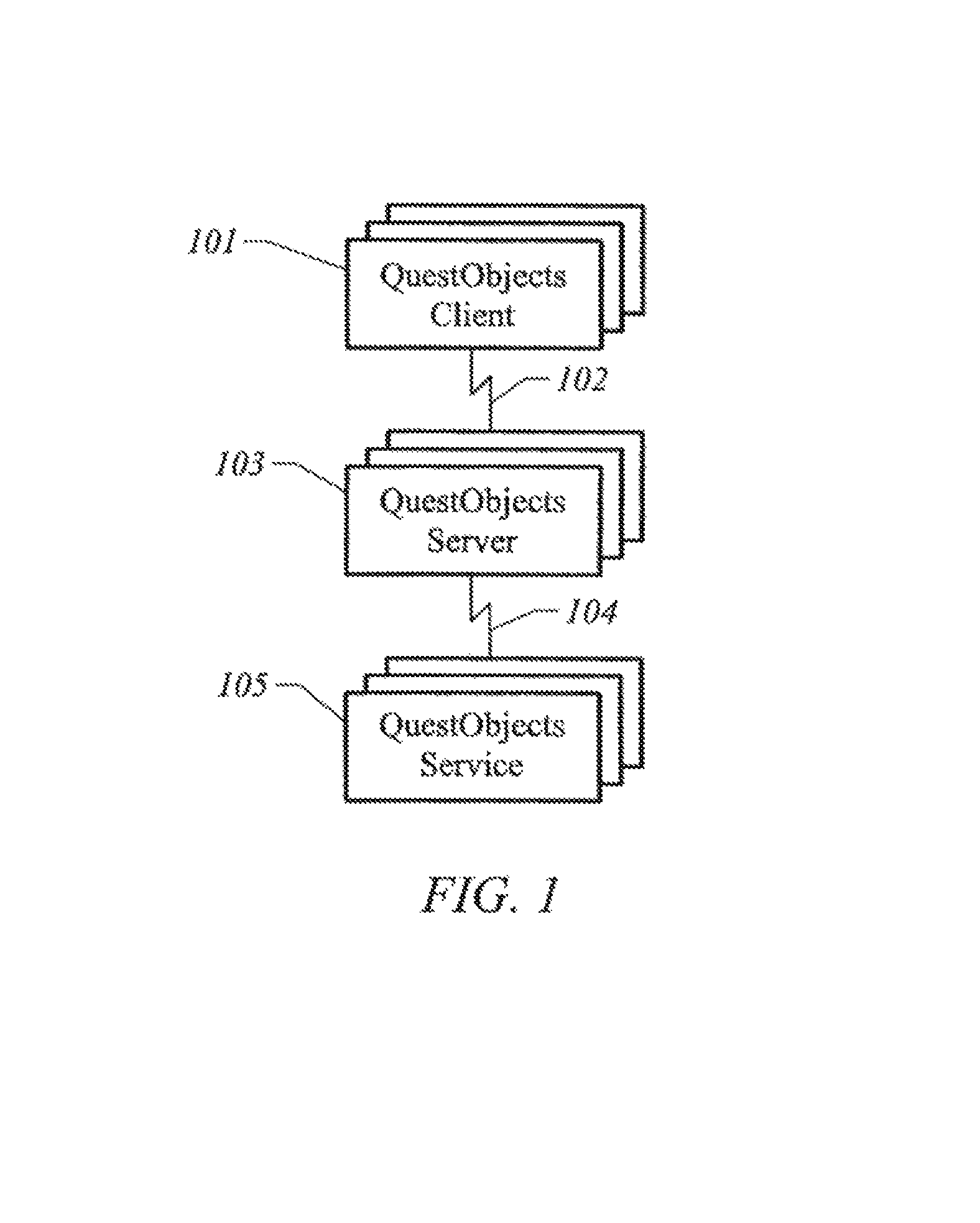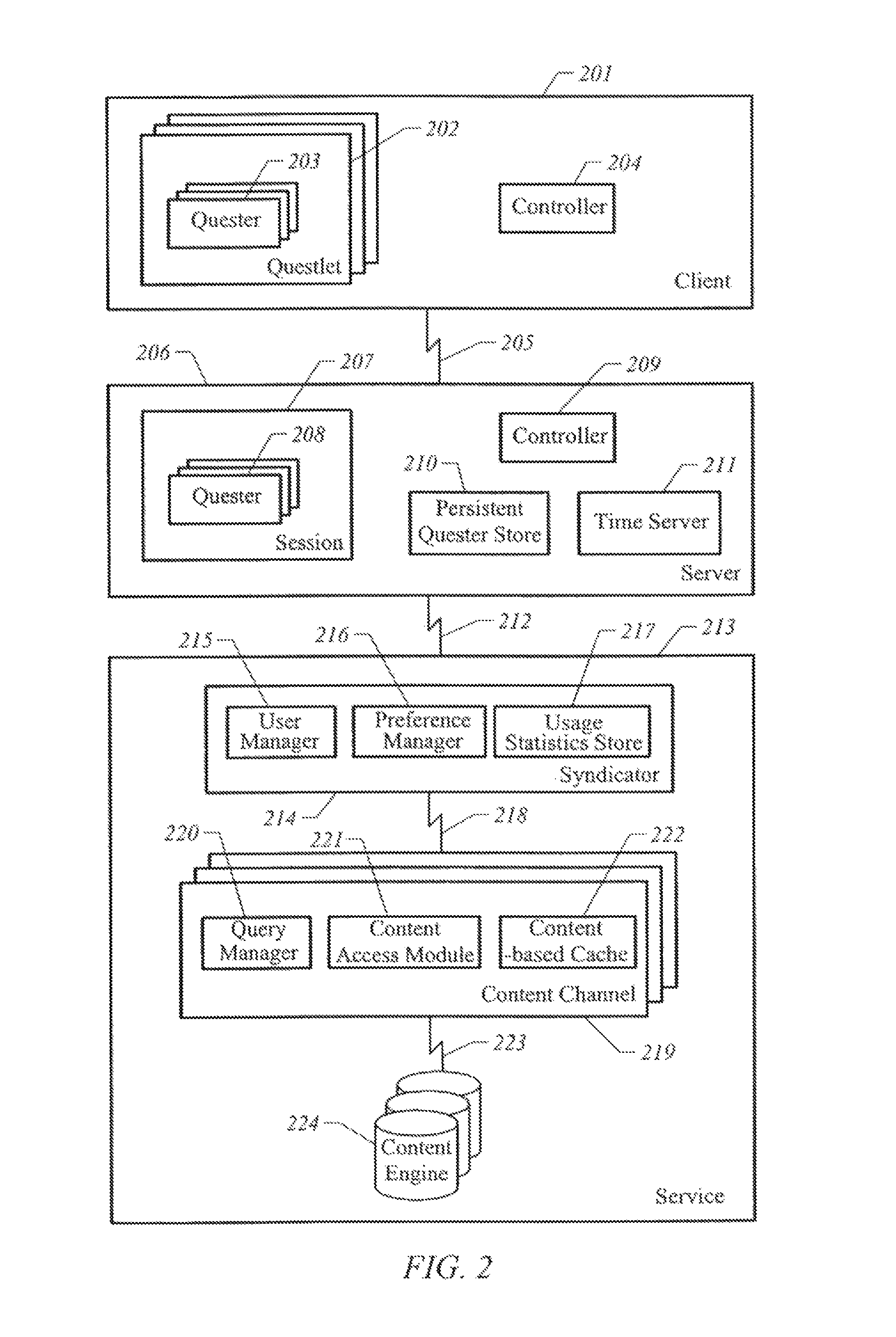System and method for asynchronous client server session communication
a client server and asynchronous communication technology, applied in the field of client server communication systems, can solve the problems of increasing the share of problems of client server computing, difficult to manage multiple copies of the same data, and large volume of enterprise data, and achieve the effects of minimizing access to the content engine, speed optimization, and expanding the usefulness and capabilities of auto-complete functions
- Summary
- Abstract
- Description
- Claims
- Application Information
AI Technical Summary
Benefits of technology
Problems solved by technology
Method used
Image
Examples
Embodiment Construction
[0068]Roughly described, the invention provides a session-based bi-directional multi-tier client-server asynchronous information database search and retrieval system for sending a character-by-character string of data to an intelligent server that can be configured to immediately analyze the lengthening string character-by-character and return to the client increasingly appropriate database information as the client sends the string.
[0069]The present invention includes a system that offers a highly effective solution to an important disadvantage of both client-server and Internet systems: The present invention provides a standardized way to immediately synchronize the data entered or displayed on a client system with the data on a server system. Data input by the client is immediately transmitted to the server at which time the server can immediately update the client display. To ensure scalability, systems built around the present invention can be divided into multiple ‘tiers’ each...
PUM
 Login to View More
Login to View More Abstract
Description
Claims
Application Information
 Login to View More
Login to View More - R&D
- Intellectual Property
- Life Sciences
- Materials
- Tech Scout
- Unparalleled Data Quality
- Higher Quality Content
- 60% Fewer Hallucinations
Browse by: Latest US Patents, China's latest patents, Technical Efficacy Thesaurus, Application Domain, Technology Topic, Popular Technical Reports.
© 2025 PatSnap. All rights reserved.Legal|Privacy policy|Modern Slavery Act Transparency Statement|Sitemap|About US| Contact US: help@patsnap.com



